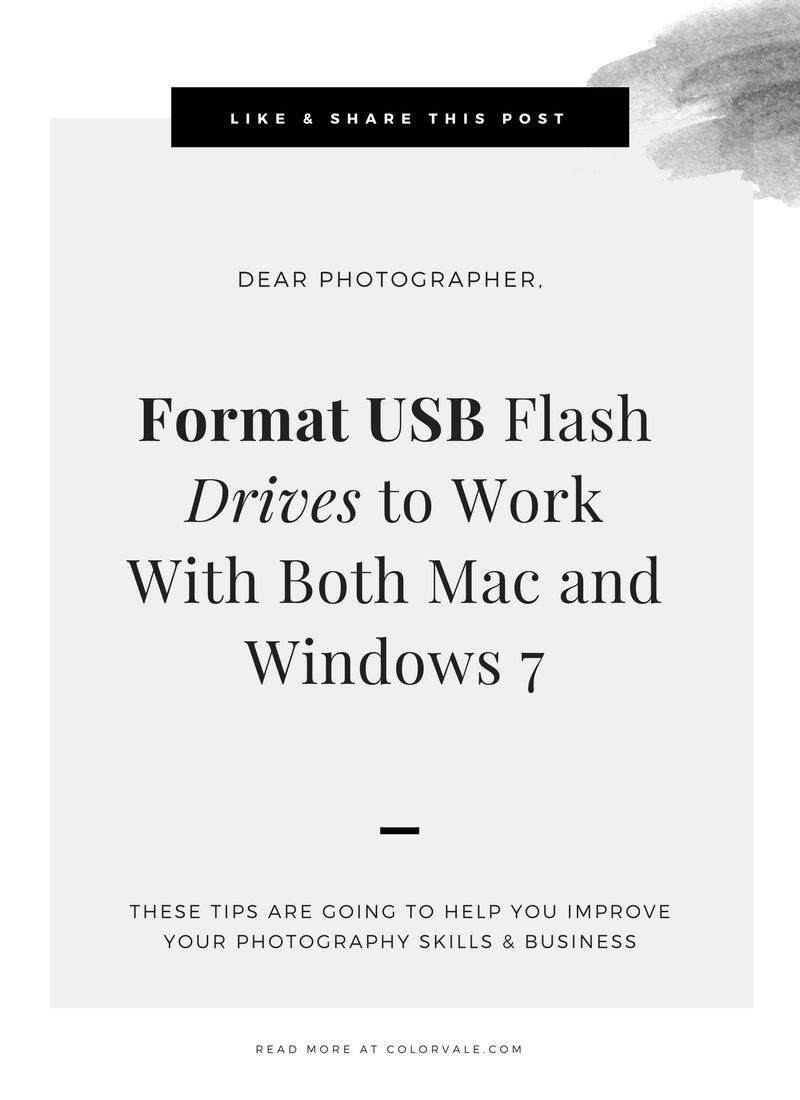

- #HOW TO FORMAT THUMB DRIVE FOR MAC ON PC MAC OS X#
- #HOW TO FORMAT THUMB DRIVE FOR MAC ON PC WINDOWS 7#
- #HOW TO FORMAT THUMB DRIVE FOR MAC ON PC WINDOWS#
This Mac 911 article is in response to a question submitted by Macworld reader Robin. Select the drive in the left-hand sidebar.įrom the Scheme menu, select Master Boot Record.Ĭlick Erase and follow prompts to confirm. Launch Disk Utility (from Applications > Utilities > Disk Utility). While first ensuring you have a copy of any data on a drive you want to format as ExFAT, as formatting will erase the drive’s contents, follow these steps:
#HOW TO FORMAT THUMB DRIVE FOR MAC ON PC WINDOWS#
Instead, pick ExFAT, its replacement (and still quite old), best used on drives of 32GB or larger capacity. If you have an external hard drive or USB flash drive that you'd like to use on both Macs and Windows PCs, choosing the right file system to format the drive can be confusing. Make sure format is 'Mac OS Extended Journaled' and ensure that the scheme is set to 'GUID Partition Map'. Highlight the main drive (left side window pane) and then click on the Erase tab. Connect your external drive into your USB port. Click on the USB drive in the sidebar in Disk Utility. Go to Applications>Utilities and launch Disk Utility. To format a USB drive in FAT32 or exFAT: 1.
#HOW TO FORMAT THUMB DRIVE FOR MAC ON PC MAC OS X#
Designed for an earlier time, it can’t handle files larger than 4GB. Open disk utility on your Mac OS 10.13 High Sierra. Better still, it can be read from and written to on any Mac running Mac OS X Snow Leopard or later and on Windows. If you’re both Mac users, swell with Mac and Windows in the mix, you might be tempted to pick FAT32 when formatting that thumb drive.īut FAT32 is distinctly out of date. Click the Erase button and the drive will start formatting. Select the format Mac OS Extended (HFS+), MS-DOS (FAT32), or exFAT then name the drive. Select your external hard drive or USB flash drive from the list on the left. Launch Disk Utility (Applications > Utilities). But it still crops up whenever you’re trying to put files on a USB thumb drive to hand off to someone else. Format a drive using Disk Utility on a Mac. This Mac 911 article is in response to a question submitted by Macworld reader Robin.For those of us who rarely transfer files physically across devices, file-format capability may be a distant memory. Instead, pick ExFAT, its replacement (and still quite old), best used on drives of 32GB or larger capacity. Designed for an earlier time, it can’t handle files larger than 4GB.
#HOW TO FORMAT THUMB DRIVE FOR MAC ON PC WINDOWS 7#
If you’re both Mac users, swell with Mac and Windows in the mix, you might be tempted to pick FAT32 when formatting that thumb drive.īut FAT32 is distinctly out of date. exFAT is compatible with Mac OS X 10.6.5 or newer, Windows Vista, Windows 7 and Windows 8. Step 3: As you click on the Erase button, you will see several fields in the section.

Step 2: From the left side panel, pick the volume or the drive that you want to format and switch to the Erase tab. Choose the filesystem you’ve decided to use on the device. Step 1: Connect the USB drive or external drive to Mac and launch the Disk Utility from Applications. Right-click on it in a File Explorer window and choose Format from the menu that pops up.

But it still crops up whenever you’re trying to put files on a USB thumb drive to hand off to someone else. The process is the same for both internal and external storage devices. For those of us who rarely transfer files physically across devices, file-format capability may be a distant memory.


 0 kommentar(er)
0 kommentar(er)
